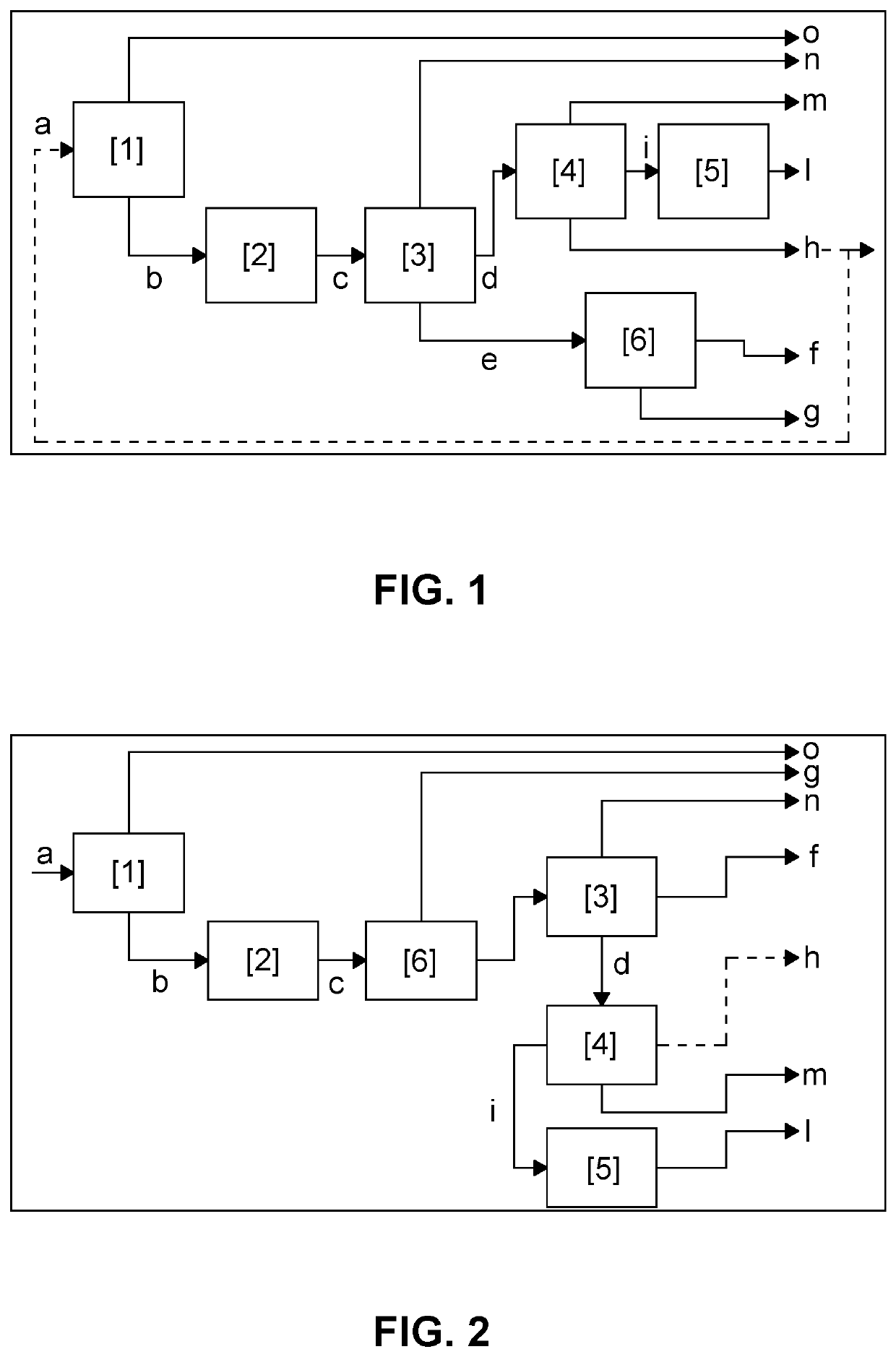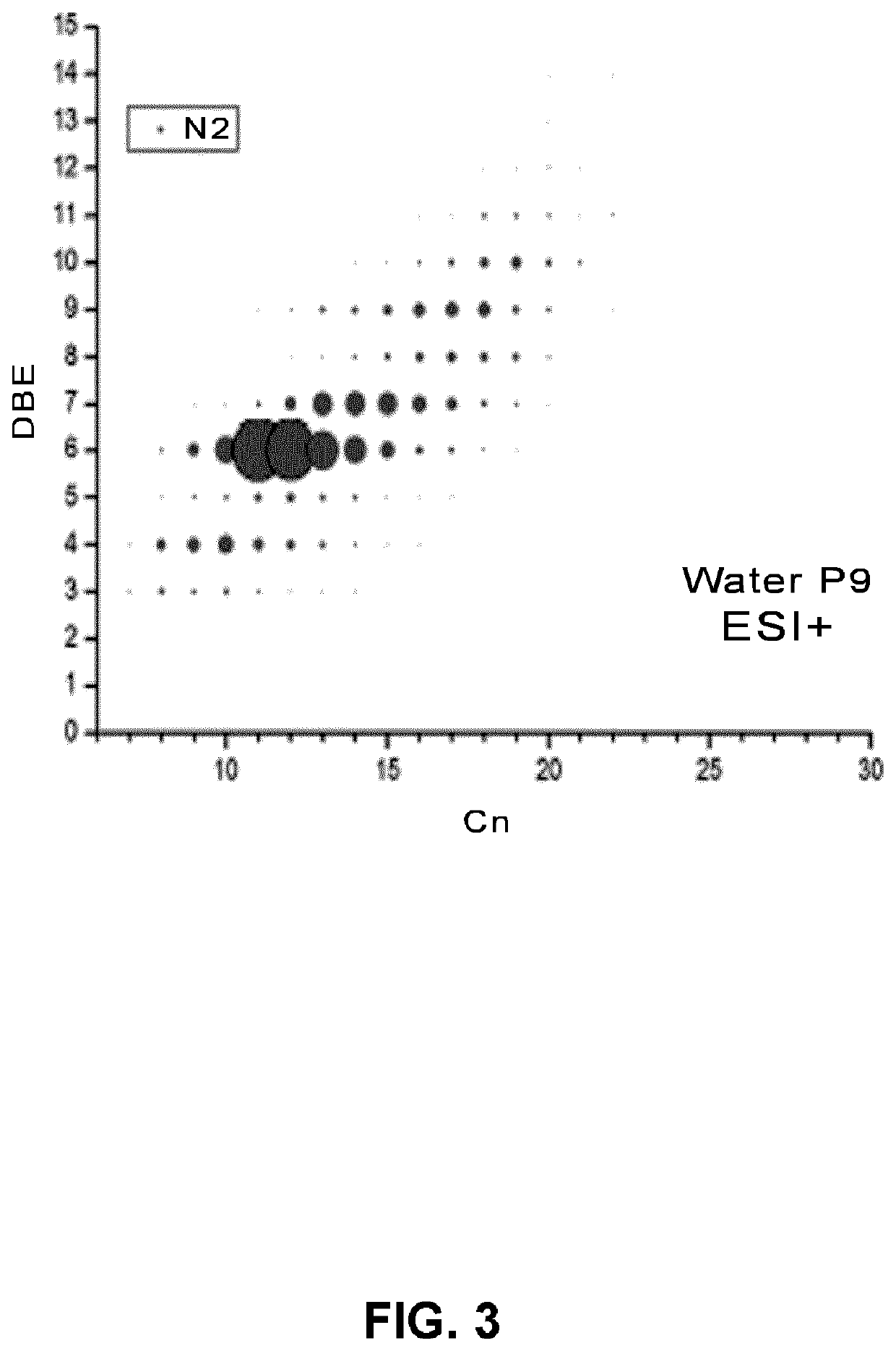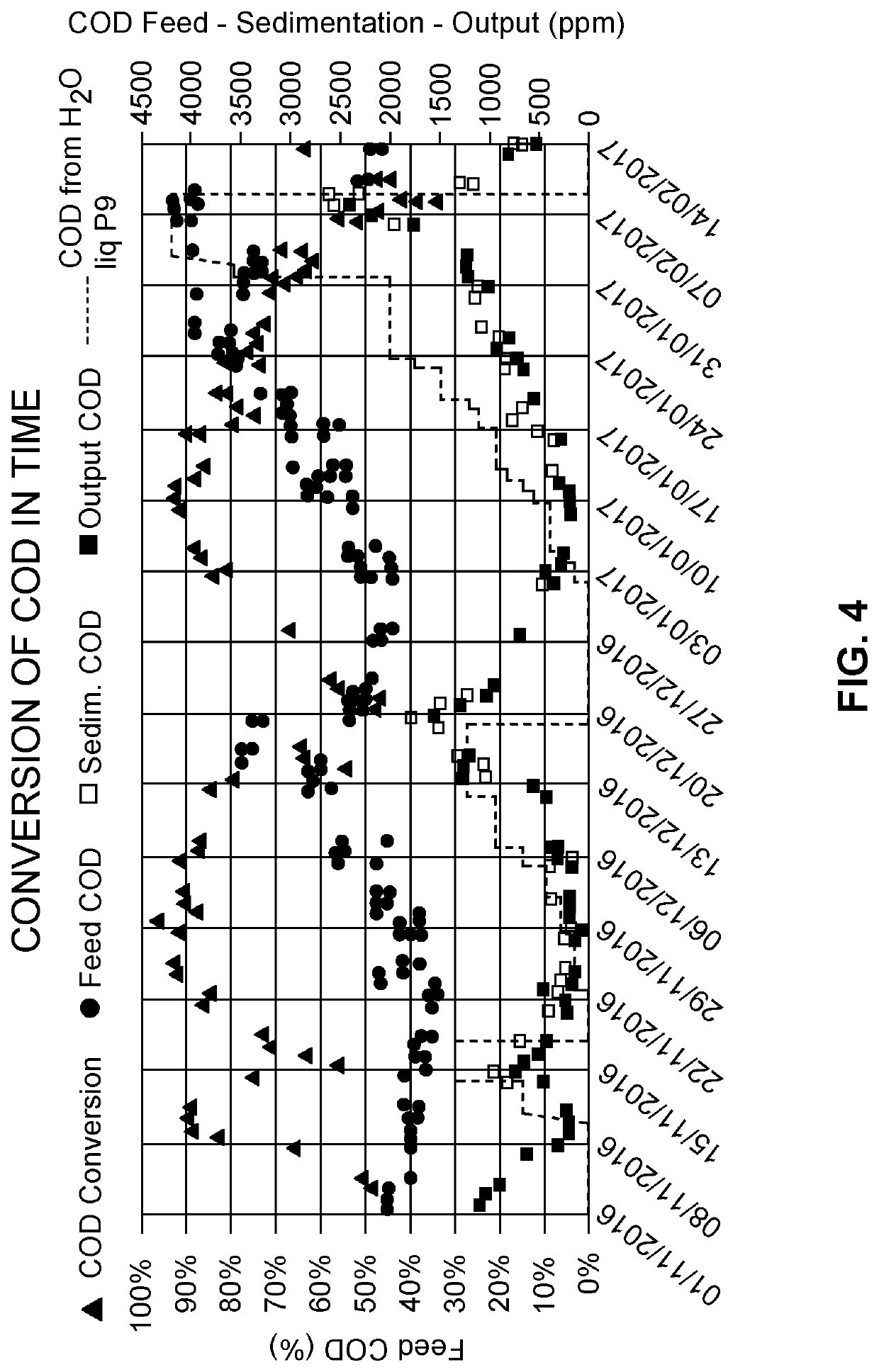Process for the production of bio-oil and biogas from biomass
a bio-oil and biomass technology, applied in the direction of gaseous fuels, biological sludge treatment, treatment water, etc., can solve the problems of inability to recover biogas from water produced, inability to maintain the operation of the plant, and inability to achieve continuous pilot management. achieve the effect of high biogas efficiency
- Summary
- Abstract
- Description
- Claims
- Application Information
AI Technical Summary
Benefits of technology
Problems solved by technology
Method used
Image
Examples
example 2
Anaerobic Digestion of Liquefaction Waters from OFMSW (Batch Tests in 20 ml Syringe Reactors)
[0162]Anaerobic digestion tests were carried out on the same liquefaction waters described in Example 1 (water P9) in 20 ml syringe reactors, with measurements of COD conversion, biogas production, and generation of anaerobic digestion intermediates, in particular VFAs.
[0163]The methods of performing the tests are described below and shown in FIG. 6.
[0164]1) Remove the plunger, close the tip of the syringe with the rubber cap, add the anaerobic mud (inoculum) and the liquefaction water for a total of 20 ml.
[0165]2) Close the syringe with the plunger.
[0166]3) Turn over the syringe and let the contents settle on the bottom.
[0167]4) Slowly release the internal pressure by removing the cap, expel the air.
[0168]5) Close the syringe with the cap.
[0169]6) Put the syringe in the stove conditioned to the reaction temperature 40 or 60° C.
[0170]7) Determine the biogas produced every 24 hours, reading t...
example 3
Anaerobic Digestion of the Liquefaction Waters from OFMSW (Continuous Testing in 80 ml Reactors)
[0178]A continuous two-stage anaerobic digestion test was carried out on the liquefaction waters described in Example 1 (water P9) in reactors each with a volume of 80 ml. The reactor temperatures are maintained at 60 and 40° C. by electric heating. The aqueous phases are fed to the first and second reactors by means of peristaltic pumps. An external recirculation from the second to the first reactor with peristaltic pump is provided. The gas and liquid leaving the second reactor are sampled and sent for analysis.
[0179]The methods of performing the test are described with the aid of FIG. 10 and the results are shown in FIG. 11.
[0180]The reactors are initially started up with 30 ml of active sludge inoculum and 50 ml of water and glucose to a COD of 21400 mg / kg. The same solution is continuously fed to the 1st reactor at 5 ml / day, corresponding to an HRT (hydraulic retention time) of 16 da...
PUM
 Login to View More
Login to View More Abstract
Description
Claims
Application Information
 Login to View More
Login to View More - R&D
- Intellectual Property
- Life Sciences
- Materials
- Tech Scout
- Unparalleled Data Quality
- Higher Quality Content
- 60% Fewer Hallucinations
Browse by: Latest US Patents, China's latest patents, Technical Efficacy Thesaurus, Application Domain, Technology Topic, Popular Technical Reports.
© 2025 PatSnap. All rights reserved.Legal|Privacy policy|Modern Slavery Act Transparency Statement|Sitemap|About US| Contact US: help@patsnap.com



